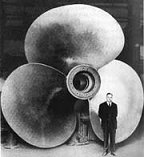The Vortex
The fun on the great adventure slides in different public pools knows no bounds! But suddenly, in full speed, you are slowed down and drawn to the middle of the basin. It takes quite a lot of effort to free oneself from the endlessly whirling water and continue the mystery tour.
 What Is a Vortex? What Is a Vortex?
In principle, rapidly rotating water. The power, with which a vortex draws an object inwardly, depends on the rotary speed. This power is called the rotary energy of the vortex. Since there is a big pressure gradient in every vortex, a great suction effect is caused. Because of this suction, all objects are positively spiralled into the centre of the vortex.
Why Are Vortexes So Important in Nature?
Naturally running water moves in wavy lines through the landscape and forms innumerable small and big whirlpools. In nature, water gets rid of pollutants by whirling processes. The vortex dissolves spatial structures. In this way, the water can free itself from shut in pollutants.
...and How Does Man Use It?
Every movement in water causes a vortex. In this way, numerous big and small vortexes are formed at a ship’s propeller as well.
The Ship’s Drive
Since fish and other molluscs move through the water very well, nature provides the best examples of moving in water.
The Trick with the Repulsion
 If you let go of an inflated balloon, it flies in the opposite direction of the escaping air. This principle of repulsion also works in water. In the sea, squids use this way of propulsion, for example. By contracting sphincters situated at the edge of their bell-shaped bodies, water is squeezed out and the animal is thrust forward. If you let go of an inflated balloon, it flies in the opposite direction of the escaping air. This principle of repulsion also works in water. In the sea, squids use this way of propulsion, for example. By contracting sphincters situated at the edge of their bell-shaped bodies, water is squeezed out and the animal is thrust forward. The use of water pressed through nozzles is relatively new. The best examples for this are the increasingly popular jet boots. The use of water pressed through nozzles is relatively new. The best examples for this are the increasingly popular jet boots.
The Classical Ship’s Drive
- Model Nature
 In the course of time, the simple hem along the body of fish developed into different fins. In that process, every species has invented its own speciality. Also the mammals that returned to the sea like whales and dolphins move along with strokes of their flippers. In the course of time, the simple hem along the body of fish developed into different fins. In that process, every species has invented its own speciality. Also the mammals that returned to the sea like whales and dolphins move along with strokes of their flippers.
Fins are very efficient organs for propulsion. They can be used for powerful acceleration and slowing down manoeuvres. Humans exploit the former when using flippers, some of which copied their shape directly from fish.
The goal of man was to move as skilfully as the fish, of course. Therefore, man invented the propeller shaft for ships in classical antiquity.

 Out of this, the first propellers were invented in the 18th century. Spiral propellers power most ships even today. Out of this, the first propellers were invented in the 18th century. Spiral propellers power most ships even today.
|
 Energy
Energy  Waterpower
Waterpower  The Vortex
The Vortex

 Energy
Energy  Waterpower
Waterpower  The Vortex
The Vortex
